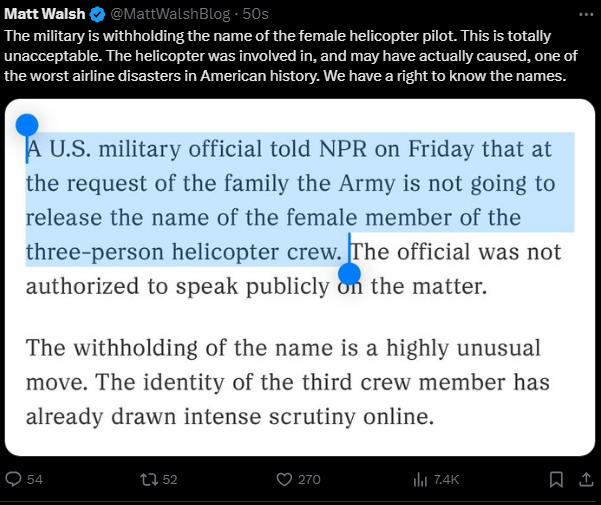For context... "pass behind" means flying the aircraft (laterally speaking) vice flying the published route.Especially in that confined area space, when you have a hard deck of 200’ and you almost double that, and you’re allegedly 1/8 of a mile off your traffic route, especially considering the route shows your supposed to be flying the edge of the river, that’s a lot of misses. But then again, depending on your familiarization of the route, complacency could also be a huge factor…. Your do the same thing over and over again and it’s just the same old same old…. Until it’s not, complacency kills, sad thing is, there’s no rest stops or aprons you just pull off to when you’re flying in the air, you may not always be able to go up, but you will ALWAYS come back down.
NVG flight is a different beast... taking visual sep responsibility likely entailed the helo crew padlocking (don't take your eyes off... things have an amazing way of 'disappearing' when you do) said traffic... and the increased scan difficulty when looking through tubes, all leads to a broken scan (namely of instruments, including the altimeter). Avoiding their interval was likely their sole focus...other than when they're talking on the radio. Of note, the male voice is doing the talking, meaning he was likely covering comm to allow the 'check pilot' to focus on flying the aircraft behind their interval. This back and forth ("are you SURE you see the CJ?") comm would've been another task that detracts from other things... and the scan is the first thing to suffer. ATC has to be directive when they see an issue, regardless of WHO is technically responsible.
Human (pilot and/or ATC) error will obviously never go away, so identifying that as 'the cause' is mm-deep thinking and partially ignores a major reality of mishaps. (not directed at you, this is a default 'finding' of investigations.) The more pragmatic approach is to determine how procedures should change in order to minimize those errors. Visual Separation (ATC passes ALL responsibility for collision avoidance to 1 of the aircraft) in a busy area (aircraft, cars, buildings), AT NIGHT, when the 2 aircraft in question aren't even communicating directly, is retarded.
The only things to lose by letting ATC continue providing aircraft separation, is the work-load of the controller (easily addressed), and the expedience of the helo flight's progress...being the smaller and more maneuverable, it would inevitably be told to spin, hold, deviate, etc.). ATC can be quick to pass responsibility, particularly if they're overwhelmed... but that doesn't address why the squadron would make the decision to accept that risk by making this "normal" procedure. I propose it became their culture based on the 'needs' (desires) of their cargo.






